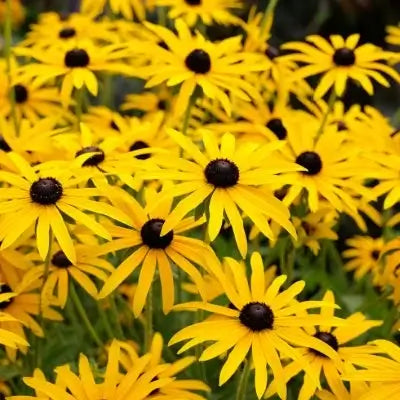Restoring the Green: Effective Methods to Cover Bald Spots on Your Lawn
A lush and vibrant lawn is a source of pride for homeowners, but maintaining that perfect expanse of green can be challenging, especially when bald spots start to mar its beauty. Bald spots in the grass can result from various factors, such as heavy foot traffic, disease, pests, inadequate watering, or poor soil conditions. However, the good news is that there are several effective methods to address these issues and restore your lawn's appearance. In this article, we'll explore a range of strategies to cover bald spots in your grass and help your property thrive once more.
Identify the Underlying Causes
Before diving into the methods of covering bald spots, it's crucial to identify the issue's root causes. Examine the bald spots closely to determine whether they result from poor soil health, compacted soil, pet urine, diseases, pests, or excessive shade. Different causes require different solutions, so understanding the underlying problems will help you select the most effective approach.
Reseeding
Reseeding is one of the most common and effective ways to cover bald spots in your lawn. Choose a high-quality grass seed that matches the existing grass type on your property. Prepare the area by removing any debris. Spread the seed evenly over the bald spots and lightly rake to cover the bases with a thin layer of soil. Water the area regularly to moisten the ground until the new grass establishes itself.
Sod Installation
Sodding involves laying down pre-grown grass rolls over the bald spots. While it's more expensive than reseeding, sod provides instant results. Prepare the soil by loosening it and amending it with compost if necessary. Lay the sod in a staggered pattern to prevent visible seams. Water the newly laid sod thoroughly and keep it well-watered for the first few weeks to help establish it.
Aerating and Dethatching
Compacted soil and excessive thatch can hinder grass growth. Aerating involves perforating the ground for better air, water, and nutrient penetration. Dethatching, on the other hand, removes the layer of dead grass and roots that can accumulate on the soil surface.
These practices can improve the overall health of your lawn and promote new grass growth in bald spots. Test your soil for nutrient levels and choose a balanced fertilizer that suits your grass type and soil conditions. Apply the fertilizer according to the recommended guidelines. Adequate nutrients will promote new grass growth and help fill in bald spots.
Adjusting Watering Practices
Consistent or adequate watering can lead to bald spots in your lawn. Ensure that your property receives sufficient water, especially during dry periods. Water deeply and infrequently to encourage profound root growth. Consider using a soaker hose or irrigation system to deliver water evenly across the lawn. Avoid overwatering, leading to other issues, such as fungal diseases.
Managing Shade
If bald spots are caused by excessive shade, consider trimming trees or shrubs to allow more sunlight to reach the affected areas. Alternatively, you can choose shade-tolerant grass varieties for those spots. Regularly prune overhanging branches to maintain optimal light conditions.
Pest and Disease Management
Pests can wreak havoc on your lawn, causing bald spots to appear. Identify the specific problems or conditions affecting your property and treat them accordingly. Using pesticides or fungicides might be necessary. However, consider environmentally friendly options and follow the instructions carefully.
Topdressing
Topdressing involves applying a thin layer of compost, soil mix, or sand over the bald spots. It helps improve soil structure, retains moisture, and provides a suitable environment for grass growth. After topdressing, gently rake the surface to level it and promote seed-to-soil contact.
Regular Maintenance
Prevent future bald spots by maintaining a regular lawn care routine. It includes mowing at the correct height for your grass type, keeping mower blades sharp, and practicing proper lawn care techniques.
Conclusion
A well-managed lawn enhances the curb appeal of your property and provides a pleasant outdoor space for relaxation and recreation. While bald spots in the grass can be frustrating, they are not insurmountable challenges. You can successfully cover bald spots and restore the lush, green expanse you desire by identifying the underlying causes and applying appropriate solutions such as reseeding, sod installation, aeration, fertilization, and proper watering practices.
Regular maintenance and care will ensure your lawn remains vibrant and inviting for years. A lush and vibrant lawn adds a touch of beauty and serenity to any property, creating an inviting outdoor space for relaxation and recreation. However, achieving and maintaining such a lawn requires consistent care and attention.
One of the fundamental aspects of lawn care is proper mowing
Regular mowing not only keeps your lawn looking neat and well-groomed but also promotes healthy grass growth. Set your mower to the appropriate height for your grass type, and avoid cutting more than one-third of the grass height at a time. It prevents stress on the grass and encourages profound root growth.
Regular watering is another essential element of lawn care. It encourages the development of solid and drought-resistant roots. To conserve water, consider using a sprinkler system with a timer or watering during the more excellent parts of the day.
Fertilization plays a crucial role in maintaining the vibrancy of your lawn. Applying the right type and amount of fertilizer at the appropriate times throughout the year.



























































